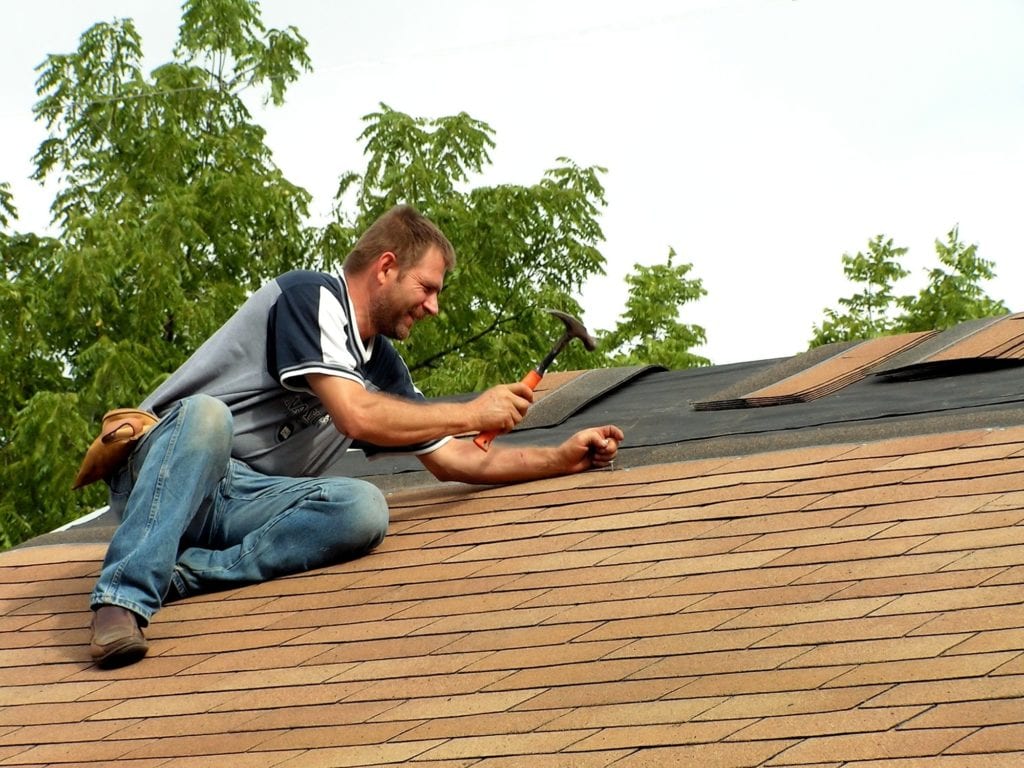Comprehending the Various Types of Roof Coverings: A Comprehensive Guide for Homeowners
With a variety of choices-- ranging from the traditional gable to the modern flat-- each kind offers unique benefits and obstacles that must straighten with the home owner's environmental factors to consider and details demands. As we check out the details of various roofing system kinds, it comes to be obvious that one dimension does not fit all; the appropriate selection might stun you.
Saddleback Roof
Gable roofs, identified by their triangular shape, are among one of the most popular roofing designs due to their simplicity and efficiency in losing water and snow. This style features two sloping sides that meet at a ridge, enabling for effective drain and decreasing the risk of water buildup. The steep pitch commonly related to saddleback roofs boosts their capacity to deal with heavy precipitation, making them suitable for various environments.
In enhancement to their sensible advantages, gable roofing systems use visual flexibility. They can be adjusted to different architectural styles, from typical to contemporary homes. The layout can additionally accommodate added features such as dormer home windows, which enhance all-natural light and ventilation in the attic area.
Additionally, saddleback roofs provide enough room for insulation, contributing to energy performance. Homeowners can pick from a range of roof covering products, including asphalt roof shingles, metal, and floor tiles, further improving personalization choices.
Regardless of their advantages, saddleback roofs may call for additional support in locations susceptible to high winds or heavy snowfall. Generally, the gable roofing continues to be a preferred option because of its blend of functionality, toughness, and visual appeal.
Apartment Roofs
Flat roofs are typically recognized for their minimal style and practical applications, particularly in commercial and commercial setups (oahu roofing). These roofings feature a virtually straight or horizontal surface, which enables very easy building and construction and flexible space utilization. While they may lack the visual charm of pitched roofings, level roofing systems supply countless benefits, specifically in metropolitan environments where optimizing room is crucial
One of the main advantages of level roofs is their availability. Homeowners can make use of the roof area for different purposes, such as rooftop yards, terraces, or photovoltaic panel installments. In addition, level roofs are commonly much more cost-effective to preserve and set up compared to their sloped counterparts, as they need less materials and labor.
Common products used for level roofing systems consist of built-up roof covering (BUR), customized bitumen, and single-ply membrane layers, each offering unique advantages. On the whole, flat roofing systems offer as a versatile and practical option for several home owners and businesses alike.
Hip Roofs
Hip roofing systems are characterized by their sloped sides that assemble at the top, creating a ridge. This layout is unique from saddleback roofs, as all 4 sides of a hip roof incline downwards toward the wall surfaces, providing a much more stable framework. The angle of the slopes can vary, allowing for adaptability in architectural appearances and functionality.
One of the primary benefits of hip roofing systems is their ability to stand up to heavy winds and unfavorable weather. The sloped surfaces enable far better water drainage, decreasing the threat of leaks and water damages. In addition, hip roofings offer raised attic area, which can be used for storage or even converted right into habitable areas.
However, building a hip roofing system can be more expensive and complicated than less complex roof types, such as gable roof coverings. The extra material and labor involved in developing the slopes and making sure proper architectural integrity can lead to higher costs. In spite of these disadvantages, many homeowners prefer hip roofs for their sturdiness, visual charm, and potential for power efficiency.
Mansard Roofing Systems
Mansard roofing systems, commonly recognized by their one-of-a-kind four-sided layout, function two inclines on each side, with the lower slope being steeper than the upper. This architectural style, originating from France in the 17th century, is not only cosmetically appealing but functional, as it optimizes the functional room in the upper floorings of a structure. The steep lower slope permits more clearance, making it an excellent selection for attic rooms or lofts, which can be exchanged living areas.
Mansard roofs are defined by their adaptability, accommodating different architectural styles, from standard to contemporary. They can be created with different materials, consisting of asphalt tiles, slate, or steel, offering house owners with a series of alternatives to fit their preferences and spending plans. In addition, the style enables the combination of dormer home windows, improving natural light and ventilation in the upper levels.
However, it is vital to think about the possible downsides. Mansard roofings may require even more upkeep due to the intricacy of their style, and their high inclines you could try here can be challenging for snow and rainfall overflow. On the whole, mansard roof coverings incorporate elegance with usefulness, making them a popular choice among house owners seeking distinct architectural functions.
Lost Roof Coverings
As property owners increasingly seek simplicity and performance in their architectural layouts, shed roofs have emerged as a prominent choice. Characterized by a single sloping aircraft, a shed roof covering offers a minimal visual that complements numerous home designs, from modern to rustic.
Among the primary benefits of a shed roofing is its simple building and construction, which commonly equates to decrease labor and material costs. This style enables efficient water drainage, minimizing the danger of leaks and water damage. Furthermore, the upright slope gives sufficient room for skylights, improving natural light within the interior.
Dropped roofings likewise offer adaptability in terms of usage. They can be properly integrated into enhancements, garages, or exterior frameworks like structures and sheds. In addition, this roof covering style can suit various roofing more helpful hints materials, including steel, asphalt tiles, and even environment-friendly roof coverings, lining up with environmentally friendly efforts.
However, it is necessary to think about regional environment conditions, as hefty snow loads may require changes to the roof's angle or framework. Overall, shed roofs offer a useful and cosmetically pleasing choice for house owners looking to make best use of capability without compromising style.
Verdict


Gable roof coverings, identified by their triangular shape, are amongst the most popular roofing styles due to their simplicity and efficiency in dropping water and snow. oahu roofing. The steep pitch frequently connected with gable roofings improves their capability to manage heavy precipitation, making them appropriate for various climates
While they might do not have the aesthetic allure of pitched roofing systems, flat roofing systems provide various advantages, particularly in urban atmospheres where optimizing room is essential.

 Danny Tamberelli Then & Now!
Danny Tamberelli Then & Now! Kel Mitchell Then & Now!
Kel Mitchell Then & Now! Alicia Silverstone Then & Now!
Alicia Silverstone Then & Now! Seth Green Then & Now!
Seth Green Then & Now! Traci Lords Then & Now!
Traci Lords Then & Now!